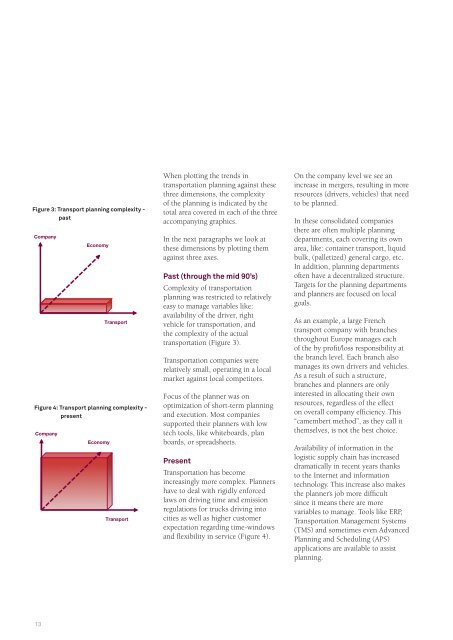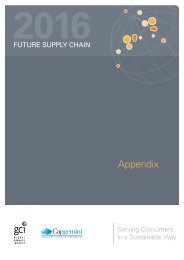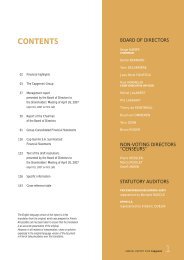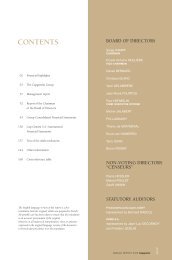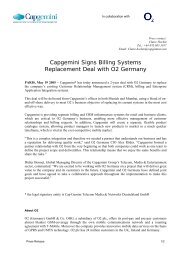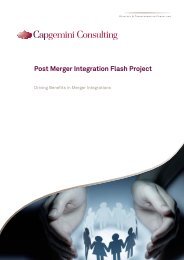Transportation Management Report 2011 - Capgemini
Transportation Management Report 2011 - Capgemini
Transportation Management Report 2011 - Capgemini
Create successful ePaper yourself
Turn your PDF publications into a flip-book with our unique Google optimized e-Paper software.
Figure 3: Transport planning complexity -<br />
past<br />
Company<br />
13<br />
Economy<br />
Transport<br />
Figure 4: Transport planning complexity -<br />
present<br />
Company<br />
Economy<br />
Transport<br />
When plotting the trends in<br />
transportation planning against these<br />
three dimensions, the complexity<br />
of the planning is indicated by the<br />
total area covered in each of the three<br />
accompanying graphics.<br />
In the next paragraphs we look at<br />
these dimensions by plotting them<br />
against three axes.<br />
Past (through the mid 90’s)<br />
Complexity of transportation<br />
planning was restricted to relatively<br />
easy to manage variables like:<br />
availability of the driver, right<br />
vehicle for transportation, and<br />
the complexity of the actual<br />
transportation (Figure 3).<br />
<strong>Transportation</strong> companies were<br />
relatively small, operating in a local<br />
market against local competitors.<br />
Focus of the planner was on<br />
optimization of short-term planning<br />
and execution. Most companies<br />
supported their planners with low<br />
tech tools, like whiteboards, plan<br />
boards, or spreadsheets.<br />
Present<br />
<strong>Transportation</strong> has become<br />
increasingly more complex. Planners<br />
have to deal with rigidly enforced<br />
laws on driving time and emission<br />
regulations for trucks driving into<br />
cities as well as higher customer<br />
expectation regarding time-windows<br />
and flexibility in service (Figure 4).<br />
On the company level we see an<br />
increase in mergers, resulting in more<br />
resources (drivers, vehicles) that need<br />
to be planned.<br />
In these consolidated companies<br />
there are often multiple planning<br />
departments, each covering its own<br />
area, like: container transport, liquid<br />
bulk, (palletized) general cargo, etc.<br />
In addition, planning departments<br />
often have a decentralized structure.<br />
Targets for the planning departments<br />
and planners are focused on local<br />
goals.<br />
As an example, a large French<br />
transport company with branches<br />
throughout Europe manages each<br />
of the by profit/loss responsibility at<br />
the branch level. Each branch also<br />
manages its own drivers and vehicles.<br />
As a result of such a structure,<br />
branches and planners are only<br />
interested in allocating their own<br />
resources, regardless of the effect<br />
on overall company efficiency. This<br />
“camembert method”, as they call it<br />
themselves, is not the best choice.<br />
Availability of information in the<br />
logistic supply chain has increased<br />
dramatically in recent years thanks<br />
to the Internet and information<br />
technology. This increase also makes<br />
the planner’s job more difficult<br />
since it means there are more<br />
variables to manage. Tools like ERP,<br />
<strong>Transportation</strong> <strong>Management</strong> Systems<br />
(TMS) and sometimes even Advanced<br />
Planning and Scheduling (APS)<br />
applications are available to assist<br />
planning.


